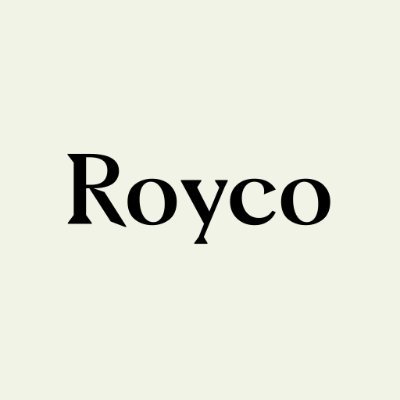
Royco
Royco Protocol allows anyone to create a market to incentivize any onchain transaction or series of transactions.
PoC Required
KYC required
Rewards
Rewards by Threat Level
Mainnet assets:
Reward amount is 10% of the funds directly affected up to a maximum of:
$250,000Minimum reward to discourage security researchers from withholding a bug report:
$50,000Rewards are distributed according to the impact of the vulnerability based on the Immunefi Vulnerability Severity Classification System V2.3.
Reward Calculation for Critical Level Reports
For critical smart contract bugs, the reward amount is 10% of the funds directly affected up to a maximum of USD 250 000. The calculation of the amount of funds at risk is based on the time and date the bug report is submitted. However, a minimum reward of USD 50 000 is to be rewarded in order to incentivize security researchers against withholding a critical bug report.
Repeatable Attack Limitations
-
If the smart contract where the vulnerability exists can be upgraded or paused, only the initial attack will be considered for a reward. This is because the project can mitigate the risk of further exploitation by upgrading or pausing the component where the vulnerability exists. The reward amount will depend on the severity of the impact and the funds at risk.
-
For critical repeatable attacks on smart contracts that cannot be upgraded or paused, the project will consider the cumulative impact of the repeatable attacks for a reward. This is because the project cannot prevent the attacker from repeatedly exploiting the vulnerability until all funds are drained and/or other irreversible damage is done. Therefore, this warrants a reward equivalent to 10% of funds at risk, capped at the maximum critical reward.
Reward Calculation for High Level Reports
- High vulnerabilities concerning theft/permanent freezing of unclaimed yield/ are rewarded within a range of USD 3 000 to USD 10 000 depending on the funds at risk, capped at the maximum high reward.
For critical web/apps bug reports will be rewarded with USD 10 000, only if the impact leads to:
- A loss of funds involving an attack that does not require any user action
- Private key or private key generation leakage leading to unauthorized access to user funds
All other impacts that would be classified as Critical would be rewarded a flat amount of USD 2 000. The rest of the severity levels are paid out according to the Impact in Scope table.
Reward Payment Terms
Payouts are handled by the Royco team directly and are denominated in USD. However, payments are done in USDC on Ethereum
The calculation of the net amount rewarded is based on the average price between CoinMarketCap.com and CoinGecko.com at the time the bug report was submitted. No adjustments are made based on liquidity availability.
Program Overview
Royco Protocol allows anyone to create a market to incentivize any onchain transaction or series of transactions.
Using Royco:
- Incentive Providers may create offers to incentivize users to perform the transaction(s).
- Action Providers may create offers to complete the transaction(s) and/or negotiate for more incentives.
When these two satisfy each other, the onchain transaction(s) execute atomically alongside the distribution of incentives. Royco Protocol is entirely non-custodial, trustless, and permissionless. It is also capital-efficient, allowing Action Providers to create many offers with the same assets.
For more information about Royco, please visit https://www.royco.org/
Royco provides rewards in USDC on Ethereum, denominated in USD. For more details about the payment process, please view the Rewards by Threat Level section further below.
KYC Requirement
Royco will be requesting KYC information in order to pay for successful bug submissions. The following information will be required:
- Full name
- Date of birth
- Proof of address (either a redacted bank statement with address or a recent utility bill)
- Copy of Passport or other Government issued ID
- Eligibility Criteria
Security researchers who wish to participate must adhere to the rules of engagement set forth in this program and cannot be:
- On OFACs SDN list
- Official contributor, both past or present
- Employees and/or individuals closely associated with the project
- Security auditors that directly or indirectly participated in the audit review
Responsible Publication
Royco adheres to category 3 - Approval Required This Policy determines what information researchers are allowed to make public from their submitted bug reports. For more information about the category selected, please refer to our Responsible Publication page.
Primacy of Impact vs Primacy of Rules
Royco adheres to the Primacy of Impact for the following impacts:
- Smart Contract - Critical - Direct theft of any user funds, whether at-rest or in motion, other than unclaimed yield
- Web/app - Critical - Direct theft of user funds
Primacy of Impact means that the impact is prioritized rather than a specific asset. This encourages security researchers to report on all bugs with an in-scope impact, even if the affected assets are not in scope. For more information, please see Best Practices: Primacy of Impact
When submitting a report on Immunefi’s dashboard, the security researcher should select the Primacy of Impact asset placeholder. If the team behind this project has multiple programs, those other programs are not covered under Primacy of Impact for this program. Instead, check if those other projects have a bug bounty program on Immunefi.
If the project has any testnet and/or mock files, those will not be covered under Primacy of Impact.
All other impacts are considered under the Primacy of Rules, which means that they are bound by the terms and conditions set within this program.
Proof of Concept (PoC) Requirements
A PoC, demonstrating the bug's impact, is required for this program and has to comply with the Immunefi PoC Guidelines and Rules.
Previous Audits
Royco’s completed audit reports can be found at https://docs.royco.org/developers/audits. Any unfixed vulnerabilities mentioned in these reports are not eligible for a reward.
Feasibility Limitations
The project may be receiving reports that are valid (the bug and attack vector are real) and cite assets and impacts that are in scope, but there may be obstacles or barriers to executing the attack in the real world. In other words, there is a question about how feasible the attack really is. Conversely, there may also be mitigation measures that projects can take to prevent the impact of the bug, which are not feasible or would require unconventional action and hence, should not be used as reasons for downgrading a bug's severity.
Therefore, Immunefi has developed a set of feasibility limitation standards which by default states what security researchers, as well as projects, can or cannot cite when reviewing a bug report.
Immunefi Standard Badge
By adhering to Immunefi’s best practice recommendations, Royco has satisfied the requirements for the Immunefi Standard Badge.
KYC required
The submission of KYC information is a requirement for payout processing.
Proof of Concept
Proof of concept is always required for all severities.
Responsible Publication
Category 3: Approval Required
Prohibited Activities
- Any testing on mainnet or public testnet deployed code; all testing should be done on local-forks of either public testnet or mainnet
- Any testing with pricing oracles or third-party smart contracts
- Attempting phishing or other social engineering attacks against our employees and/or customers
- Any testing with third-party systems and applications (e.g. browser extensions) as well as websites (e.g. SSO providers, advertising networks)
- Any denial of service attacks that are executed against project assets
- Automated testing of services that generates significant amounts of traffic
- Public disclosure of an unpatched vulnerability in an embargoed bounty
- Any other actions prohibited by the Immunefi Rules
Feasibility Limitations
The project may be receiving reports that are valid (the bug and attack vector are real) and cite assets and impacts that are in scope, but there may be obstacles or barriers to executing the attack in the real world. In other words, there is a question about how feasible the attack really is. Conversely, there may also be mitigation measures that projects can take to prevent the impact of the bug, which are not feasible or would require unconventional action and hence, should not be used as reasons for downgrading a bug's severity.
Therefore, Immunefi has developed a set of feasibility limitation standards which by default states what security researchers, as well as projects, can or cannot cite when reviewing a bug report.


